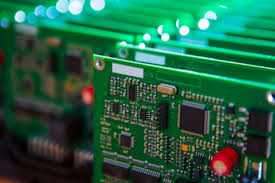Designing a PCB and sending it off for well has gotten so much busier than that. This is one of the most important decisions and should be taken after looking into all the factors which directly or indirectly hampers the quality, cost and time of your project. Well, that all you need to know to guarantee that you will face a smooth process and a seamless outcome.
Verify the Integrity of Your PCB Design
The problem you may not run into is: make sure your PCB design does not have errors. Before ordering, make sure that your design doesn't have any issues with the performance or manufacturability This covers confirmation of trace widths, streamline, component location and connectivity. Run simulations using PCB design software and file viewers to test how your layout should behave under these conditions, and that all of your electrical parameters are met.
Choose the Right Manufacturer
So it is of great importance to select the appropriate PCB manufacturer. Only trust suppliers that can offer you pricing that is competitive, but also have a reputation for reliability and quality. Certifications (for example ISO 9001, or UL certification), proof of technology capabilities and honest customer reviews. A high-standard manufacturer will take all steps to produce your PCB in the best what possible.
Material Selection
Any PCB material has an effect on the following factors like thermal management and electrical properties. FR4 is generally good enough for most applications, but in cases where signals need to travel very quickly and at high frequencies, or for example, very hot, other materials must be used, like Rogers or polyimide. Now was time to ensure that the material you selected meets the needs of your PCB.
Lead time from a production perspective
The production lead time can range greatly depending on the complexity of your PCB and the manufacturers schedule. Lead times are also an important consideration as they can range from a couple days for basic boards to a few weeks for more complex multi-layer PCBs. Make sure to state the deadline (if you have one coming up any time soon), and also be ready to pay more in case the company will need to move their focus to your design after-hours.

Assess Your Quantity Needs
You need to quantitify how many PCB you need. Purchasing more units often brings the price per unit down, but it will raise the initial costs. If you are trying to take a new design through the prototyping phase, you may wish to order a smaller volume to test your idea before committing to a large production order.
Review Cost Considerations
Price is always an important consideration when you want to order a PCB chip. Request detailed quotes from several manufacturers and make sure quotes covers all costs (e.g. setup fees, material costs, special features charges such as gold plating or unusual cutouts, etc.). And a comparison of these details ought to eventually help you better budget as you see fit.
Post-Production Support Verifying
At last, see what post-production support manufacturer is providing. Assembly services, tests, and QA steps. Quality post-production support will help save you time and make sure that any problems with the PCBs are dealt with in a timely manner.
Taking these factors into careful consideration, you will place a PCB order that fits your technical needs, budget, and timeline. This all goes by proper planning and communicating quality could affect the lifetime of PCB since the beginning and, thus, leading in best result output without any defects being found later by why manufacturing.